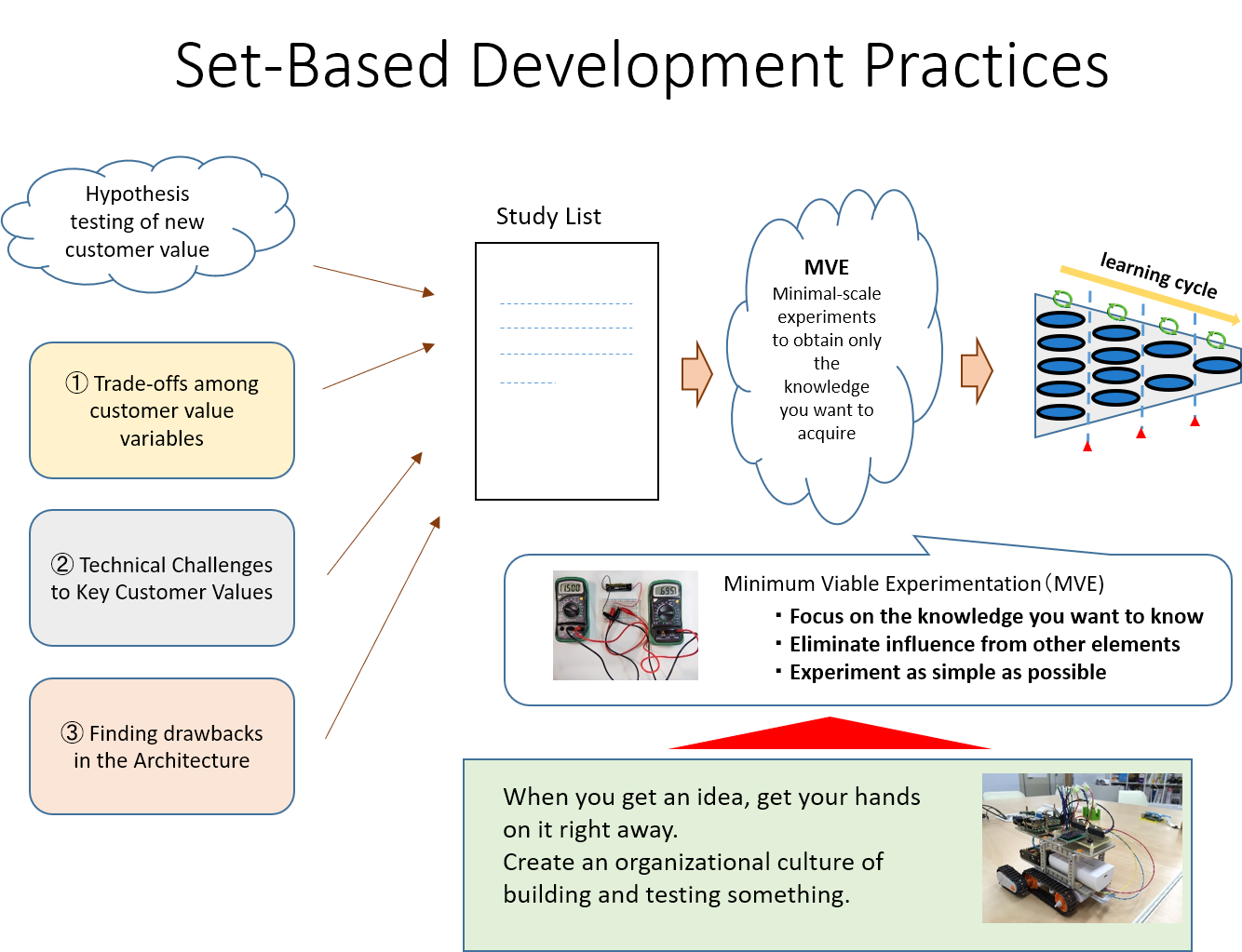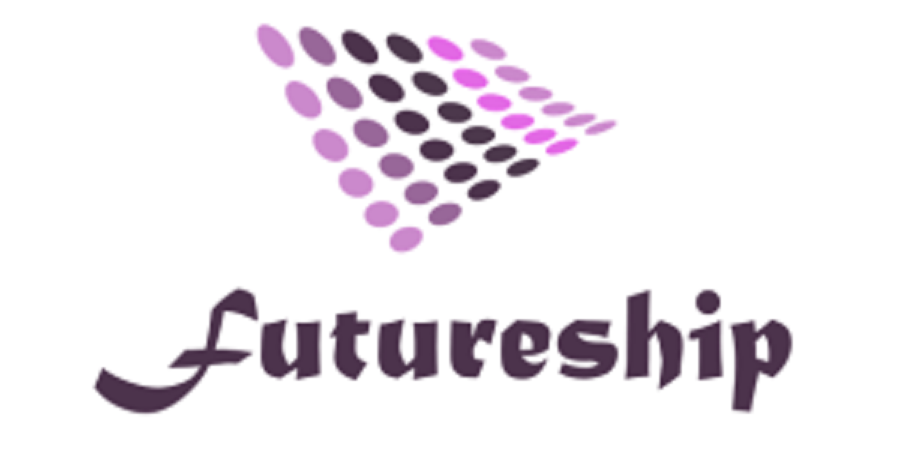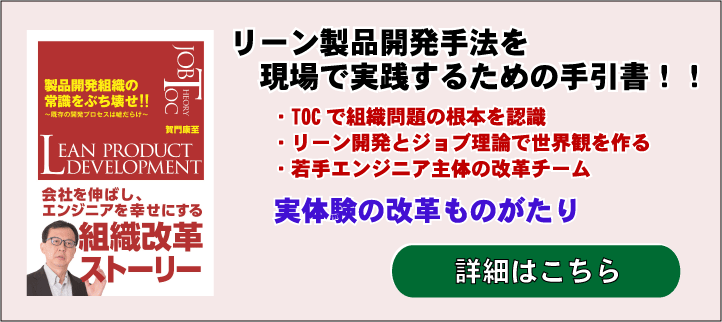

The road from idea to commercialization is a long one
When we solicit ideas for creating new concept products, we get a good number of ideas, but it is not easy to develop them into hit products. There may be a problem in the way of thinking and the process of connecting the idea to commercialization. Isn’t there a better way?
This presentation will introduce the process of connecting an idea to a hit product by using set-based development in Lean development methodology.
Contents of this article
・Ideas are generated from customer value, not from technology seeds or apparent needs
・The Learning Process of Turning Ideas Born at the Desk into Products
Ideas don’t grow at your desk
Learning stuff for innovation
This presentation will introduce the process of connecting an idea to a hit product by using set-based development in Lean development methodology.
Contents of this article
Ideas are generated from customer value, not from technology seeds or apparent needs

In order to come up with an idea and commercialize it to create a hit product, it is obvious that you have to come up with a good idea first, right?
However, at the idea stage, it is difficult to determine whether it is good or bad.
It’s often said, for example, that there are 10 judges to decide whether an idea is good or bad.
It is said that an idea that is good for all ten people is not very successful.
However, an idea that is not good for all ten people is also not successful, and an idea that might be good for two or three of the ten people is often successful.
In other words, an idea that is good for everyone may not be a surprise.
In my experience, I know of many cases where a product that was talked about behind the scenes as something that would never succeed became a success.
Perhaps there is a problem with the way we evaluate ideas.
Now, from a different angle, I think it is relatively easy to understand that what engineers tend to fall into when coming up with ideas is product-out thinking from technology seeds.
This is not to deny product out, but as Professor Christensen of Harvard Business School says in his book “Job Theory,” in order to avoid leaving innovation to chance, ideas should be conceived from the “Jobs To Be Done” of the customer.
Jobs to be done by customers” in job theory is different from needs.
A need may be a customer’s expectation for a product that already exists, but a manifest need is not a leap forward from an idea that anyone can think of.
The so-called latent needs, which even the customers are not aware of, cannot be created unless the idea is to develop these latent needs, or new customer value.
Our product development innovation aims to create hit products that are not an extension of existing products, but create new customer value.
To achieve this, we believe that engineers and technicians should come up with ideas based on customer value. In other words, we want to increase the probability of innovation by equipping engineers and technicians with marketing thinking.
Reference Articles
Here are some books to help you learn marketing in an easy-to-understand way
Teaches a framework for putting job theory into practice
In the method we use, which is a combination of Job Theory and Lean Development, in order to turn an idea into a hit product, we use the customer’s desire to evolve and the work they need to do, regardless of the product, as a clue.
See above for details 「Teaches a framework for putting job theory into practice」
I think the reason why good ideas are not generated is because the issues are poorly set or not narrowed down, resulting in idea generation that is biased toward technology seeds and apparent needs.
Let’s first learn how to think about marketing as a team of engineers and aim for a hit product
Learning process to develop ideas from the desk into products

In order to accelerate idea generation, you use brainstorming, KJ method, NM method, and so on, right
Each company has its own way of doing things here, so you can use any method you like, but we recommend using the NM method of analogical thinking to borrow ideas from other fields.
It is often said that ideas should be nurtured through multiple births and deaths.
But there may not be much of an answer to how to select and nurture good ideas.
I think one answer is that as long as the starting point is correct, the rest is to give the engineers and technicians who will be nurturing the ideas a chance to some extent, and to nurture them throughout the organization in the right way.
You can’t grow ideas at your desk
After observing the development process of many companies, I have noticed that a mistake that is often made in overly busy organizations is to discard ideas just by thinking about them on the desk.
The way it works is that from the desk study, presentation materials are quickly made and reviewed by the higher-ups, and only the good ones are kept.
The key to an idea is the problem it is trying to solve.
It is very important to use marketing thinking to set the key issues, starting from the customer value.
If you have a good problem set, the engineer has the ability to solve it.
So you have to look at the quality of the problem setting first. It is whether there is value in solving the problem.
And then, if the idea for solving the problem is
- Can it really solve the problem?
- Are there any side effects?
- Does it have practicality?
This is the essence of technological development, isn’t it?
We develop ideas by trial and error, or in other words, by learning to find solutions to 1, 2, and 3.
As we learn, our ideas may change shape or direction from the first one.
Through repeated trial and error and learning, a successful solution is found and commercialized.
There is no guarantee that solutions 1, 2, and 3 can be found, and I don’t think they can be predicted in the early stages.
In the initial stages, higher-level personnel should screen for
- How serious the person is
- Motivation of the person
- Size of the issue
- Value of the issue
That’s all.
Once the ideas are selected based on the above values, they can be nurtured through the right process to achieve commercialization.
It is important to give the person who conceives the idea a chance, and to support him/her as an organization.
It is important to give the person who conceives the idea a chance, and to support him/her as an organization.
An immature idea contains a lot of unknowns, things that we don’t understand, and things that we need to challenge.
Crushing them one by one and moving forward will lead to a hit product.
Learning stuff for innovation
When nurturing an idea, it is important to identify the learning material for the innovation.
This is how you create a strategy for what kind of learning you need to do to get closer to a hit product.
The four types of learning topics are as follows.
- Hypothesis testing for customer value itself
- Technical issues to increase customer value
- Trade-offs between customer value variables
- Deficiencies and weaknesses in product architecture
The first is learning to test hypotheses about the potential needs of customers to break through as a product, that is, new customer value that neither competitors nor customers are aware of.
2 is hypothesis testing for important technical issues related to customer value.
3 is to learn where to balance customer values when there is a trade-off between multiple customer values in the current product, or where there is a way to break through the trade-off.
The fourth type of learning is to examine issues related to flaws and weaknesses in the connections between elements when the system is made up of multiple technological elements that are combined, linked, and interact with each other.
Set-based development to make the learning cycle a process
Set-based development, which is one of the tools of Lean development methodology, is a process of listing learning topics as a learning list and solving them one by one.
The figure below summarizes the key points for practicing set-based development.

The most important thing to make set-based development go smoothly is small experiments to learn from.
This is also known as Minimum Viable Experimentation (MVE). By doing the simplest experiments possible, focusing only on the part you want to learn, or the knowledge you want to know, you will build up your knowledge in a fast cycle.
The reason why MVE is important is that if you conduct a large-scale experiment, for example, an experiment or prototype with a large system that is similar to a product, you cannot eliminate the influence of other technical elements from what you want to learn, or what you want to know.
We also don’t want to spend a lot of money and time on large experiments and prototypes.
It’s a small and fast cycle, which I think is the very idea of Lean.
In order to incorporate the learning cycle into the process of product development and idea realization, we need to develop the ability to think of small experiments.
The ability to think of small experiments is nothing more than the ability to take action, to try your hand at creating something as soon as you think of it.
Creating this culture is the most effective way to turn ideas into products with high probability.
Related Articles
Understanding Set-Based Development
The more hurdles an idea crosses, the higher its value

I would say that the greater the challenge, the greater the value of the idea.
Of course, the size of the challenge and whether or not it will be recognized as customer value are also major factors, but if the hurdles are high and there are many of them, it means that other companies will find it difficult to imitate, and by building high barriers to entry, high value can be created.
Whenever I talk about set-based development or learning cycles, I always hear the argument that “elemental development/basic research and product development are different things. That’s the argument.
The logic is that the learning cycle is done during element development and basic research, while product development is just assembling the finished technology.
It is true that product development is the process of making a product out of a technology that has been commercialized in elemental development, but is there any risk or challenge in making a product out of a technology that has been inherited from elemental development?
There is absolutely no such thing.
If you were to take a hundred steps and do a complete verification of customer value and architecture other than the perfection of the elemental technology in the elemental development stage, and if product development is really just about assembling the product, this would be work, and it would be a really boring job for an engineer.
If only the elemental technology developers need to be creative, and the product developers are just workers who assemble the product without mistakes, I don’t think the company will grow.
Division of roles between element development and product development
There are companies that properly separate the elemental development organization from the product development organization, and there are companies that do not.
In some companies, the elemental development is handled by the so-called research institute or the advanced development division, and the product development division takes over the technology that has been commercialized and turns it into a product.
In fact, there are many companies that do not have an elemental development division. There are many companies that do not have an elemental development department, and it is difficult for companies other than major corporations to have two organizations.
If there is no separate elemental development department, or if the number of employees is too small to separate the work itself, it is necessary to acquire new technologies in the product development process, and the introduction of set-based development is unquestionably recommended.
Conversely, even if elemental technology and product development are separated in their roles, the set-based approach is still valid.
Elemental development should do its best to perfect the “technology” that solves the technical issues, while product development should challenge itself to verify the hypothesis of customer value, break through the trade-offs in customer value variables, and increase customer value through architecture, that is, coordination among units and components of the entire product.
In the terminology of technology management, there are the magic river (the wall of basic research), the valley of death (the wall of practical application and mass production), and the Darwinian sea (the wall of winning in the market).
I think we should divide the roles of elemental development, the valley of death and Darwin’s sea.

When you ask what innovation is, not a few people think that it is only about the magic river.
However, I believe that there are originally three equal opportunities for innovation, and that crossing the Darwinian sea is rather the most rewarding for a company.
In order to promote innovation as an organization and increase the probability of success, I believe that the entire company should share the roles of the Devil’s River, the Valley of Death, and the Darwin’s Sea while promoting development.
Reference article: Job Theory and Marketing Thinking Seminar
Why-Why Power” and “Doubt Power” to strengthen the learning process

The most important thing when introducing the concept of set-based development to the development field is the ability of engineers to ask questions and to understand why.
What hinders innovation in product development are “assumptions”.
Human beings are like a mass of “assumptions”.
Individual and organizational assumptions hinder innovation and the ability to change.
In order to eliminate assumptions, logical thinking, or logical thinking, is necessary.
Logical thinking (the ability to think logically) can be broken down as follows.
- The ability to paraphrase力 → The ability to look at things in different levels of abstraction
- The ability to compare → The ability to evaluate things objectively
- Ability to trace → Ability to connect things by cause-and-effect relationships, necessary conditions, etc.
In other words, I believe that logical thinking can be developed through training.
※ Click here for information on seminars to strengthen logical thinking skills.
When we strengthen the logical thinking skills of each individual
- The number of people who disagree with the assumptions of the organization will increase.
- In technical meetings, the number of people who ask the right questions and make the right points will increase, and the wisdom of the organization will improve.
- The number of people who question the status quo will increase, encouraging change.
Summery
What you need to do to create a new concept and a hit product that is different from existing products is as follows.
- Engineers learn to think in marketing terms
- Set the right “challenge” from the customer’s point of view, aiming for new customer value
- Select ideas based on the value of the challenge
- Put the selected ideas into a learning cycle with set-based development
- Use logical thinking to eliminate assumptions and strengthen the learning cycle
By introducing set-based development, you can make the learning cycle a process.
At the same time, however, in order to reinforce the set-based approach, it is necessary to improve the ability to think at the individual level, i.e., logical thinking.
If you are considering implementing this into your company’s process, Futureship, which has a proven track record in implementing set-based development, would be happy to assist you.
If you are interested, please fill out the form below.
We will contact you.


